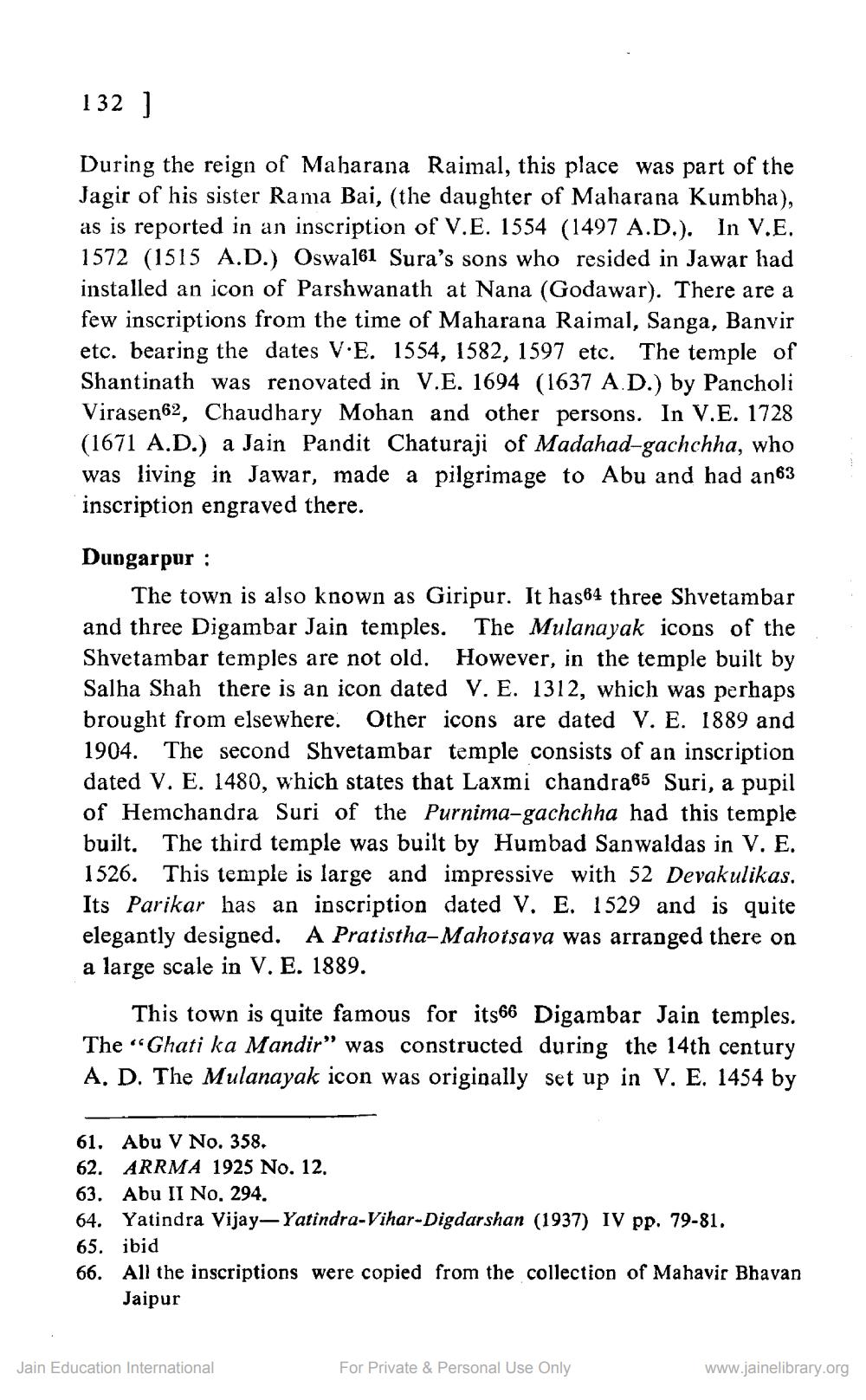________________
132 )
During the reign of Maharana Raimal, this place was part of the Jagir of his sister Rama Bai, (the daughter of Maharana Kumbha), as is reported in an inscription of V.E. 1554 (1497 A.D.). In V.E. 1572 (1515 A.D.) Oswal61 Sura's sons who resided in Jawar had installed an icon of Parshwanath at Nana (Godawar). There are a few inscriptions from the time of Maharana Raimal, Sanga, Banvir etc. bearing the dates V.E. 1554, 1582, 1597 etc. The temple of Shantinath was renovated in V.E. 1694 (1637 A.D.) by Pancholi Virasen62, Chaudhary Mohan and other persons. In V.E. 1728 (1671 A.D.) a Jain Pandit Chaturaji of Madahad-gachchha, who was living in Jawar, made a pilgrimage to Abu and had an63 inscription engraved there.
Dungarpur :
The town is also known as Giripur. It has64 three Shvetambar and three Digambar Jain temples. The Mulanayak icons of the Shvetambar temples are not old. However, in the temple built by Salha Shah there is an icon dated V. E. 1312, which was perhaps brought from elsewhere. Other icons are dated V. E. 1889 and 1904. The second Shvetambar temple consists of an inscription
ted V. E. 1480, which states that Laxmi chandra65 Suri, a pupil of Hemchandra Suri of the Purnima-gachchha had this temple built. The third temple was built by Humbad Sanwaldas in V. E. 1526. This temple is large and impressive with 52 Devakulikas. Its Parikar has an inscription dated V. E. 1529 and is quite elegantly designed. A Pratistha-Mahotsava was arranged there on a large scale in V. E. 1889.
This town is quite famous for its66 Digambar Jain temples. The “Ghati ka Mandir" was constructed during the 14th century A. D. The Mulanayak icon was originally set up in V. E. 1454 by
61. Abu V No. 358. 62. ARRMA 1925 No. 12. 63. Abu II No. 294. 64. Yatindra Vijay-Yatindra-Vihar-Digdarshan (1937) IV pp. 79-81. 65. ibid 66. All the inscriptions were copied from the collection of Mahavir Bhavan
Jaipur
Jain Education International
For Private & Personal Use Only
www.jainelibrary.org




